
What is the Royal Mile? From Visit Scotland:
The Royal Mile sits at the heart of Edinburgh and connects the magnificent Edinburgh Castle perched high on volcanic rock with the splendorous Palace of Holyroodhouse resting in the shadow of Arthur’s Seat. The Mile is overlooked by impressive, towering tenements between which closes and stairways help to create a secret underground world.
Peppered with superb attractions such as The Real Mary King’s Close, historical sites such as St Giles’ Cathedral, wonderful shops and some of the best eating and drinking spots in the city – don’t miss the luxurious Witchery Restaurant – there is so much to see and do on the Royal Mile. For recent history, be sure to visit the impressive and ultra-modern Scottish Parliament building with its cutting-edge design.
Making Our Way To The Royal Mile

To begin our walk of the Royal Mile, which is more than a mile by 107 yards, we needed to get to to Edinburgh Castle as it starts at the castle’s entrance. Walking up to the castle, as you peer up from down below it, you can’t help but remark at the impressive view. Battles and sieges were fought over this rock and the Scots and the English struggled for control of the castle during the Wars of Independence. It’s now Scotland’s leading tourist attraction and a key element of the Edinburgh World Heritage Site.
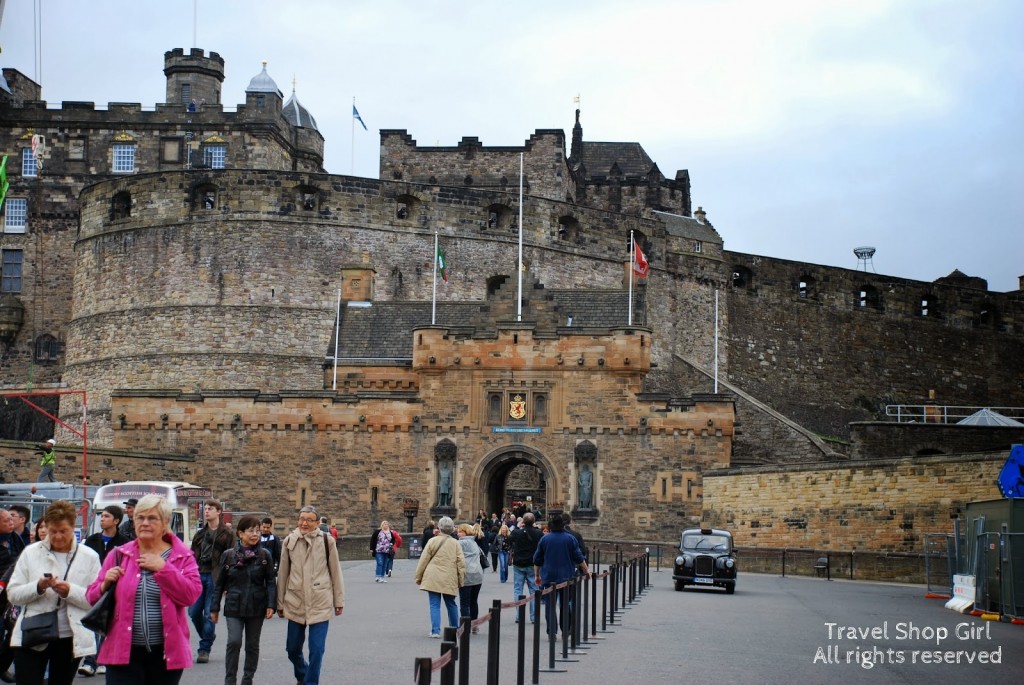
The beginning of the Royal Mile starts at the castle entrance, but we opted to skip going into the castle and continue walking. I don’t think was a bad idea considering the sheer amount of people in the area. We also saw the temporary grandstands that were there for what I believe was coming down after the annual Edinburgh Military Tattoo, an annual festival held right in front of the castle.

There are several connecting streets that make up the Royal Mile including Castlehill, Lawnmarket, High Street, Cannongate, and Abbey Strand which leads to Holyrood Palace. As you walk down Castlehill, you’ll notice a wide variety of tourist attractions. This, of course, means a great number of tourists alongside you as you meander through the cobblestone streets. I prefer to skip the tourist traps, but you should decide for yourself where you’ll want to stop and explore.

There are several tourist attractions along the way to choose from including The Witchery, which is a theme hotel and restaurant. Also nearby you’ll find the Scotch Whisky Experience, where you can learn everything you ever wanted to know about scotch whiskey (book online in advance for best pricing) and the Camera Obscura, five floors of optical experiences that acquaint you with the city of Edinburgh and the city’s history.
The Hub

When we first walked up Johnston Terrace to go up to Castlehill toward the castle entrance, we passed this large building that I believed to be a church. Now known as The Hub, it was originally constructed between 1842 and 1845 as Victoria Hall to house the General Assembly of the Church of Scotland. It’s a passion of mine to take photographs of buildings such as this with such great history embedded deep into each and every piece of stone or brick and The Hub didn’t disappoint.
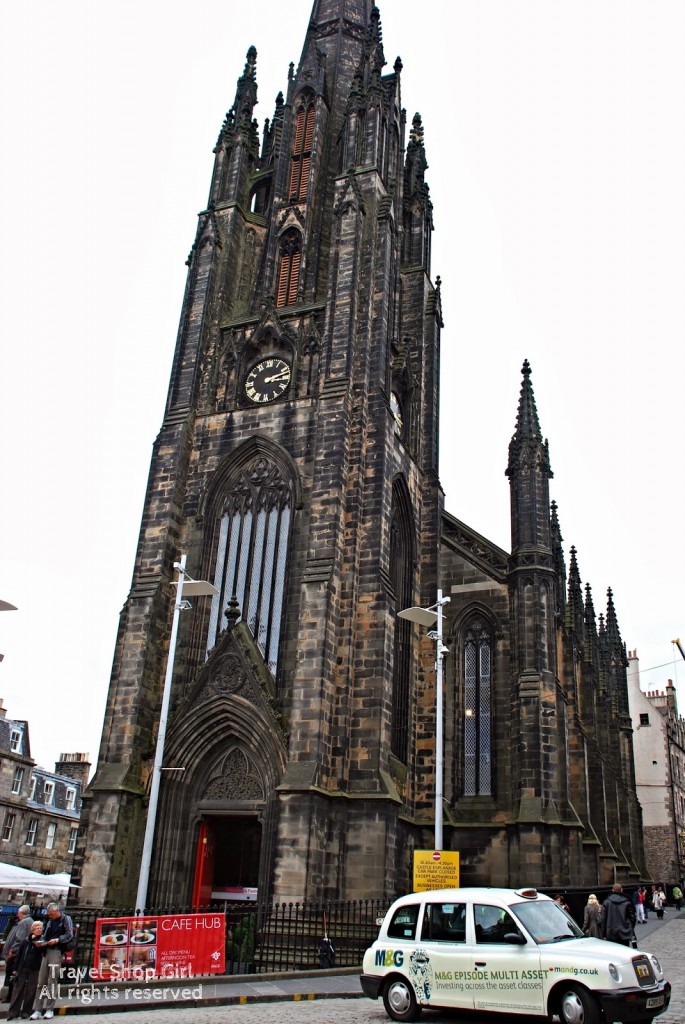
In 1999 the building was transformed into The Hub with offices and a performance space for the Edinburgh International Festival. Events and weddings are held here, but if you’re just looking for a place to grab a quick bite, you can stop in at the Cafe Hub for afternoon tea (£15) or lunch.

If you’re looking for souvenirs of any kind, you’ll definitely find it in any of the shops in this area. Be it a kilt, a cardigan, a scarf, or scotch whiskey, you will absolutely find it here.
High Street
St. Giles’ Cathedral

The next stretch of walking is along High Street, which is where you will see this great church. St. Giles’ Cathedral is another place to stop in and admire along the way on your walk down the Royal Mile. Founded in the 1120’s, St. Giles‘ was the church of John Knox during the Reformation and is often referred to as the ‘Cradle of Presbyterianism.’ Nearby you can see the Mercat Cross, which I will cover as well as the cathedral in another post.
Heart of Midlothian
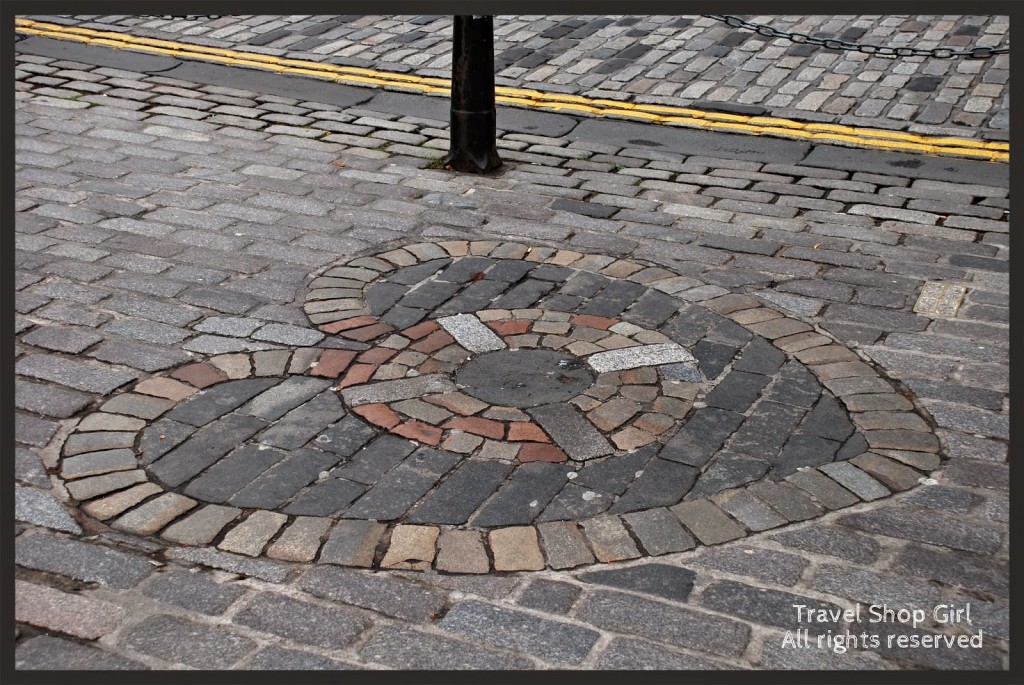
On the sidewalk near the entrance to St. Giles’ is the Heart of Midlothian. There’s no marker right on it to indicate its existence so unless you know it’s there, you’ll probably walk past it or over it. The Old Tolbooth used to stand here and was the administrative center of the city, prison, and one of the many sites of public execution. The heart sits outside of what would have been the prison entrance. Today, people often spit on the heart as perhaps prisoners might have done upon their release. Perhaps spitting on it today is an indicator of their hatred of the prison or what is probably more realistic, a sign of good luck. I passed on the spitting tradition, but did take a picture of the heart composed of colored granite stones.

The pedestrian walkway is lined with shops, tours, restaurants, buskers, and even a lady who advertises herself as the Guinness World Book of Records Most Pierced Human Being. The large clock tower on the building toward the middle is the Tron Kirk. Previously the principal parish church, it closed in 1952 and is now a pub known as the Tron.
High Street to Canon Gate

To continue down the Royal Mile, you’ll need to continue down High Street to Canongate, which means “the canons’ way” as this is what it was used for in times past by the Augustinian canons of Holyrood Abbey. On the left side of the street is Dubh Prais, the Scottish Restaurant recommended by my friend Kat. We tried to get in, but without advanced reservations we were out of luck. Definitely will be on my list for next time.
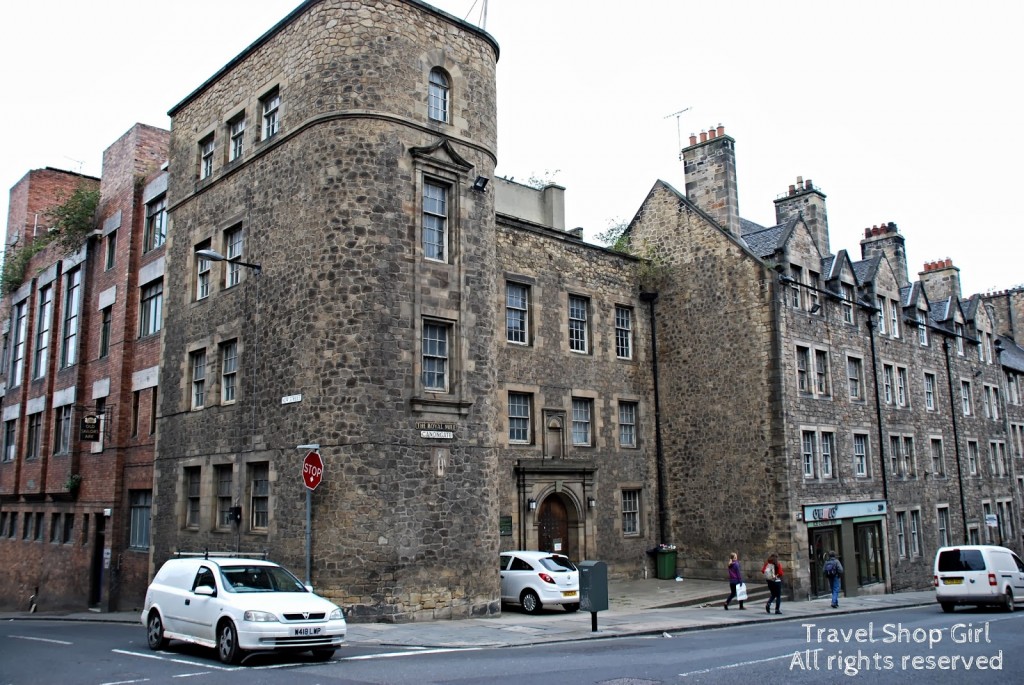 In case you’re concerned that you might get lost, don’t worry as the streets are clearly marked. With sufficient signage that says The Royal Mile, and a straight shot down to Holyrood Palace, believe me, you won’t get lost.
In case you’re concerned that you might get lost, don’t worry as the streets are clearly marked. With sufficient signage that says The Royal Mile, and a straight shot down to Holyrood Palace, believe me, you won’t get lost.
Tolbooth Tavern

The Tolbooth Tavern is located on Canongate and is part of the original Canongate Tolbooth built in 1591. The building was used to collect tolls from travelers, but also served as a council chamber, police court, and prison. From the Tolbooth Tavern‘s website:
In 1654 Oliver Cromwell’s guard detained several Scottish enemies of the State in the building but the Tolbooth’s walls could not hold them and they made their escape using strips of blanket as rope lowering themselves to freedom from the upper floor.
The front area became a tavern in 1820 with the back built as housing around 1750 and was still used for that purpose through the early 20th century. Apparently, they even have a resident ghost who likes to knock things off the walls.
The World’s End
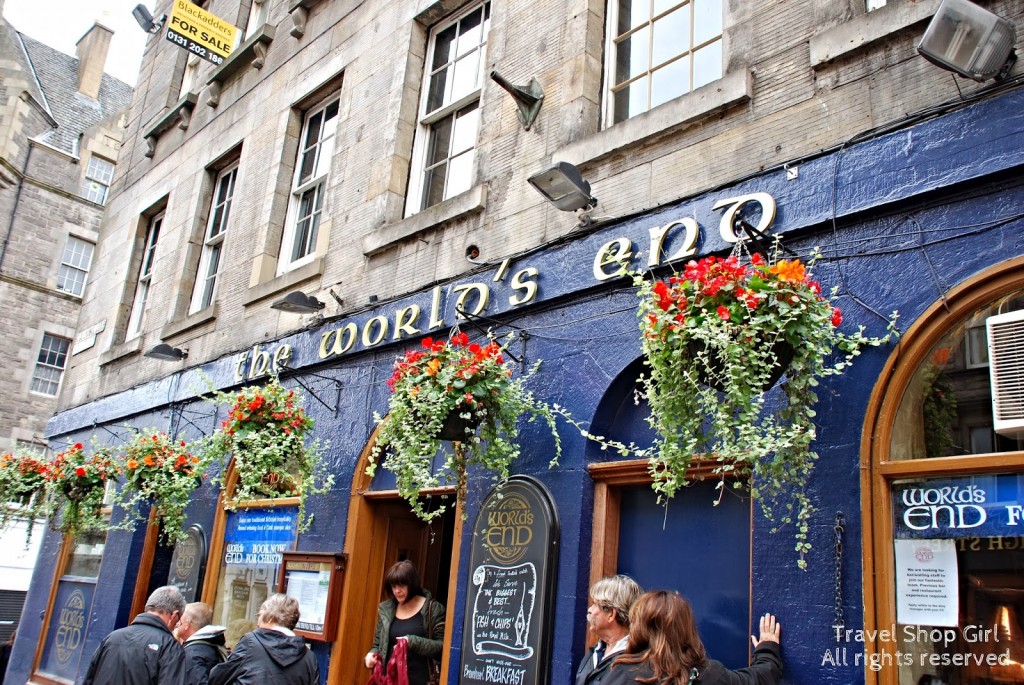
You’ll know you’re about halfway there when you approach The World’s End. I will have a separate post on this pub later, but for now I can tell you we went in because we had just seen the movie of the same name although the pub seems completely unaware of it.
Scottish Parliament
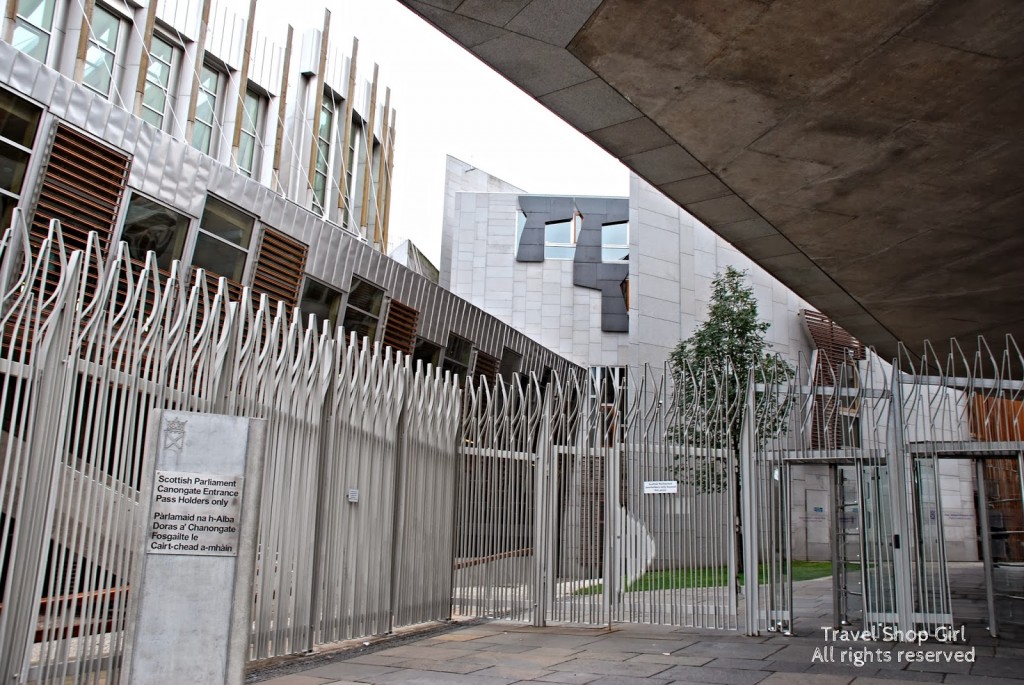
Near the bottom of Canongate stands the new Scottish Parliament building, which with its modern architecture, still works with the abundance of history that surrounds it. Scheduled to open in 2001, it opened in 2004 to controversy. The idea was to achieve a poetic union between the Scottish landscape, its people, its culture, and the city of Edinburgh. Although it has won many awards for design, it also made the list of buildings people would like to see demolished.
The Queen’s Gallery

After winding your way down the hill toward the bottom of the Royal Mile, you’ll end up at Abbey Strand and the Queen’s Gallery. Built into the shell of the former Holyrood Free Church and Duchess of Gordon’s School, the Gallery was opened by Her Majesty the Queen on 29 November 2002, as part of the Golden Jubilee celebrations. It hosts a program of changing exhibitions from the Royal Collection.

You can walk around past the Gallery toward the entrance of the Queen’s residence, the Palace of Holyroodhouse, when she’s in town. Talk about pretty nice accommodations for a vacation home, especially as she only spends one week a year here during the summer. The palace has served as the principal residence of the Kings and Queens of Scots since the 16th century.
Final Thoughts on The Royal Mile
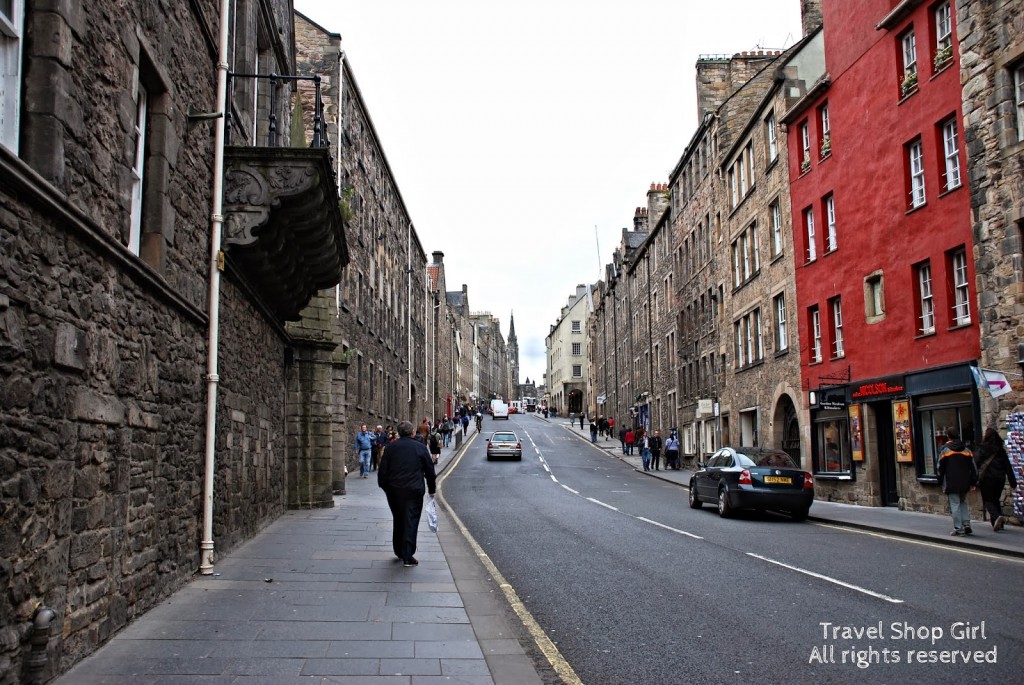
During the Edinburgh Festival, the Royal Mile can get seriously crowded with tourists. My advice is to visit any other of time of the year. You’ll avoid the large crowds and really enjoy all of the rich history that Edinburgh has to offer.
So now that you know what the Royal Mile is, you have to come visit. But remember, once you walk down that nice long hill, you’ll need to walk back up and continue to explore more of Edinburgh. Below are the addresses for all of the main points of interest I mentioned in my post.
Edinburgh Castle
Castlehill
Edinburgh, Midlothian EH1 2NG
The Hub
Castlehill
Edinburgh EH1 2NE
Dubh Prais
123B High Street
Edinburgh, Midlothian EH1 1SG
The World’s End
4 High Street
Old Town EH1 1TB
Queen’s Gallery
Palace of Holyroodhouse
Canongate, The Royal Mile
Midlothian EH8 8DX
The Witchery
Castlehill
Edinburgh, EH1 2NF
The Tron
9 Hunter Square
Edinburgh EH1 1QW
Tolbooth Tavern
167 Canongate
Edinburgh Midlothian EH8 8BN
Scottish Parliament Building
Horse Wynd
Edinburgh, Midlothian EH99 1SP
Did you know that this post is a GPS enabled article on the GPSmyCity app? Click here to read more about it or here for the app article itself. While you’re here, don’t forget to explore the rest of the Travel Shop Girl website for great tips, tricks, and destination information from around the world.




Thank you, will be making my first trip to Edinburgh soon so I am looking at places to visit.
Mary – I’m so jealous! Edinburgh is one of my favorite destinations and I hope to return there soon. Marian